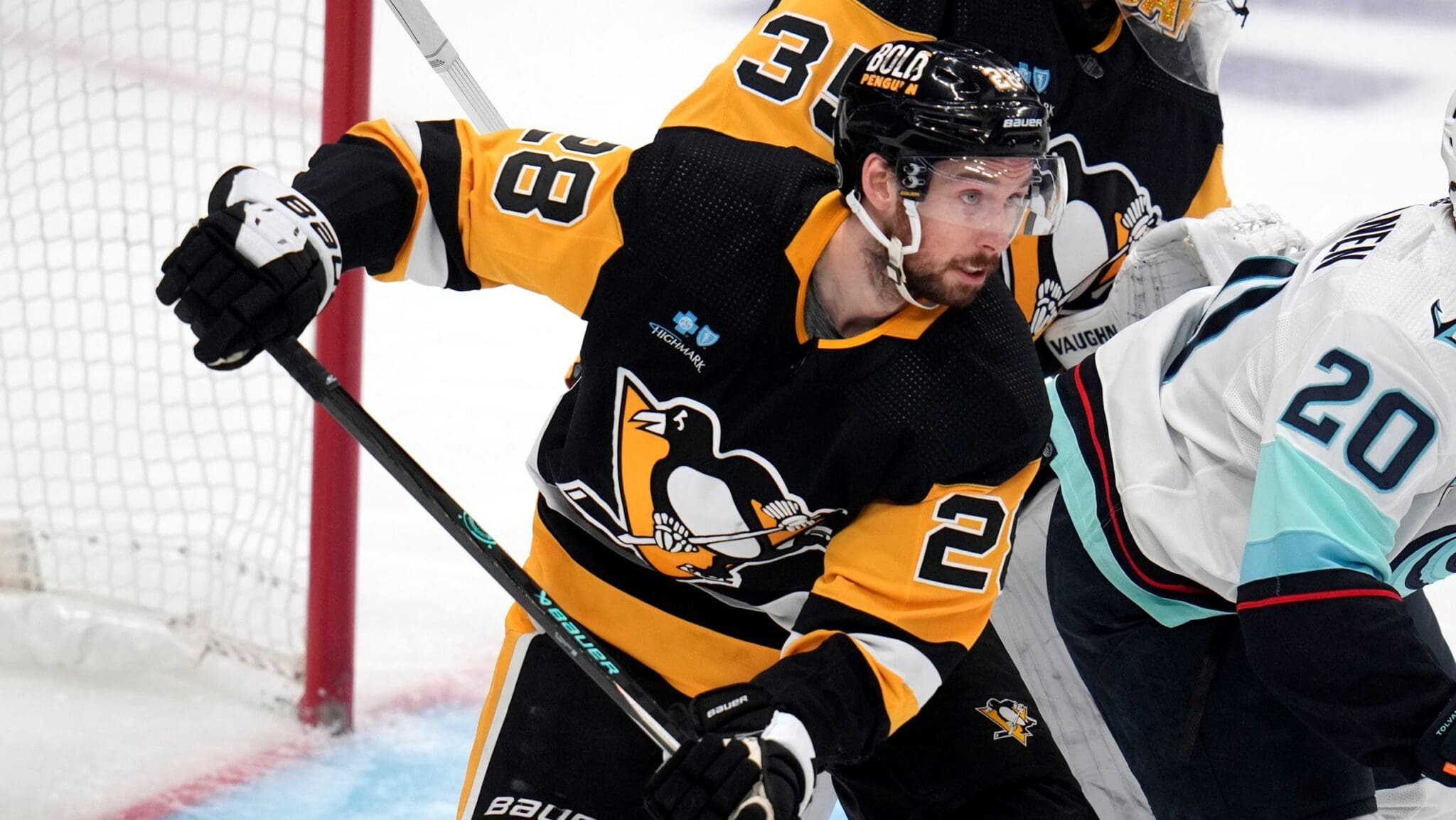Penguins
How Can Penguins Get Into Stanley Cup Playoffs? Play Like This

CRANBERRY — There was a lot for the Pittsburgh Penguins to like about their 3-0 victory against Seattle at PPG Paints Arena Monday.
And not just the two-point boost it gave them in the Eastern Conference playoff race.
For while the performance was not perfect — the power play again produced nothing except frustration, for example, and none of the bottom-six forwards made it onto the scoresheet — it did provide a template that, if followed consistently, should allow the Penguins to collect enough victories to return to the Stanley Cup playoffs this spring.
The goaltending was good — Tristan Jarry stopped 22 Kraken shots to earn his fifth shutout of the season — and Sidney Crosby was typically sensational, scoring two goals and doing his customary assortment of Crosby things.
But the most impressive — and encouraging — facet of their performance might have been the way the Penguins committed to impeding Seattle’s offense, which entered the game averaging 2.9 goals.
It surely helped that the Kraken were missing high-scoring defenseman Vince Dunn and gifted young center Matty Beniers, but the Penguins defended all over the ice like they actually meant it.
“They had to go through five guys all the time,” defenseman Marcus Pettersson said after practice Wednesday at UPMC Lemieux Sports Complex Wednesday. “That really helped us.”
The Kraken’s challenge was compounded because the Penguins’ puck-management was very good, reducing the number of opportunities Seattle got to mount an attack.
“We were smarter with the puck,” fourth-line center Noel Acciari said. “We definitely limited our turnovers.”
That, coupled with better decision-making, shrunk the number of odd-man rushes they allowed, something that had been a glaring issue during overtime losses to Vancouver and Carolina a few days earlier.
“We did a really good job at taking care of the puck,” winger Rickard Rakell said. “Also, staying on top of them in the neutral zone. They didn’t get too many looks off the rush.”
Although excellent goaltending by Jarry minimized the damage done when the Penguins were outnumbered in their own end by the Canucks and Hurricanes, a team with the Penguins’ offensive abilities recognizes the havoc those odd-man situations can spawn.
“We’d love to play that way, if a team let us have six 2-on-1s,” Pettersson said, smiling.
The Penguins complemented their sound defensive work with good breakouts and an effective forecheck.
“That created a lot of broken plays and turnovers that worked to our advantage,” Rakell said.
Despite an occasional hiccup — wretched starts against Vancouver and Carolina come immediately to mind — the Pittsburgh Penguins have begun to get their game in order in recent weeks, going 10-3-3 in their past 16 games. But maintaining any momentum they have generated during that time could be difficult, since they have a lot of downtime in their short-term future.
The Penguins are in the midst of an extended stretch between their victory over Seattle at a game in Las Vegas Saturday, and will have three full days off after playing at Arizona Monday before facing Florida Friday at PPG Paints Arena. And after they take on Montreal next Saturday, a bye week and the all-star break will keep them idle until Feb. 6.
Players suggested that, in addition to the obvious negatives, there are some benefits to having such a light schedule.
“We have a few days between games,” Pettersson said. “We have to take advantage of that, have some good practices, have some time to rest and let banged-up bodies recover. So I think it’s a good thing.”
The Penguins are, at the moment, one point behind Detroit and Tampa Bay, which hold the two wild-card spots in the Eastern playoff field. They have one game in hand on the Red Wings, two on the Lightning.
It doesn’t take an advanced mathematics degree to recognize what’s at stake for the Pittsburgh Penguins in their remaining 40 games.
“We know this second half is going to be huge for us,” Rakell said.
The Penguins, of course, have no control over when they will play the 40 games they have left.
But how they will play in those is entirely up to them. And the course they choose likely will determine how their season plays out.












